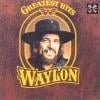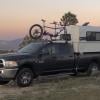So here’s my 3/4 ton story. Last year my wife and I decided we wanted a FWC camper and are fortunate enough to live less than an hour’s drive from the FWC factory in Woodland. We also didn’t own a truck at the time so we had the luxury of matching the truck to the camper.
We looked at the various models and decided that a Hawk with a few options (furnace, hot water, small 3-way frig) was what we wanted. I asked the sales guy Steve about trucks. He mentioned that I could get by with a half-ton truck but would probably need helper springs and/or air bags. They even had some springs and air bags on display with the campers.
I’m a belt and suspenders, better safe than sorry kinda guy, so “get by” and “helper springs” were huge red flags to me. I decided right then to go with a 3/4 ton truck. I found a 2012 GMC 2500HD with 6.0L V8 gasser at good price and jumped on it.
We had the camper installed on December 31st and have taken it on four trips so far. Drove some windy roads on the Sonoma coast last weekend and I’m very happy with the handling and performance.
So the numbers: the GVWR of the truck is 9500 lbs. I had it weighed before the camper install with just me and a full tank of gas, it came in at 6340 lbs so I had over 3000 lbs of payload to play with. Had it weighed as we left on our first trip with full tanks of gas, propane and water, food, gear, ice chests and all the other usual stuff, along with my wife and me. 8680 lbs! Still under the GVWR but a lot more than I would have guessed.
The paperwork I rec’d with the camper shows an empty weight of 1224 lbs without the jacks. That means that I’m carrying over 1100 lbs of stuff in addition to the camper. I was surprised by that as I’m a pretty light packer. I think that’s where the half-ton crowd goes wrong by underestimating the weight of the other crap that we take with us.





















